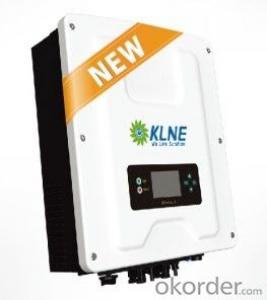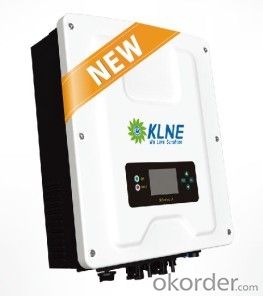6000W Solartec D 3000 Solar On Grid Inverter with 2 MPPT WiFi
- Loading Port:
- Shanghai
- Payment Terms:
- TT OR LC
- Min Order Qty:
- -
- Supply Capability:
- 10000 set/month
OKorder Service Pledge
Quality Product, Order Online Tracking, Timely Delivery
OKorder Financial Service
Credit Rating, Credit Services, Credit Purchasing
You Might Also Like
Solartec D 2500,3000,3600,4000,4600,5000
2MPPT Trackers
online monitoring system by integrated WIFI
Integrated DC Switch
Comprehensive protection functions
Graphic display
High efficiency 97.5%
RS 485/RS 232/SolarLog Communication
5 Years warranty
G83,G59,VDE 4105,VDE 0126,CEI
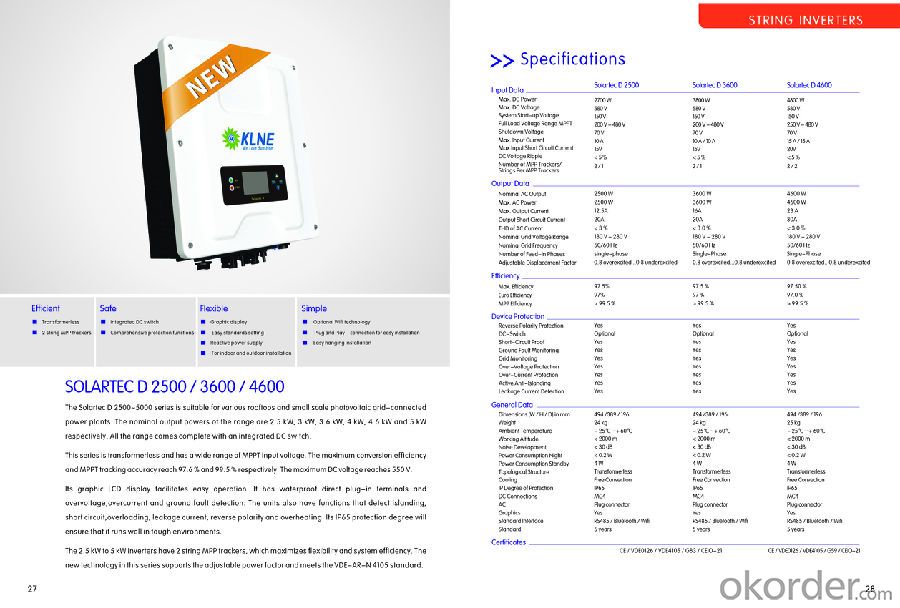
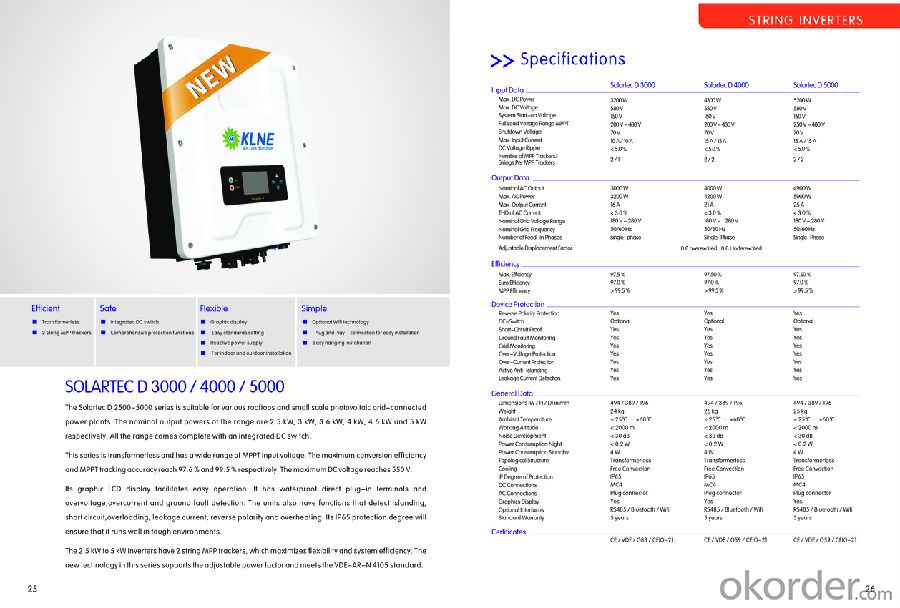
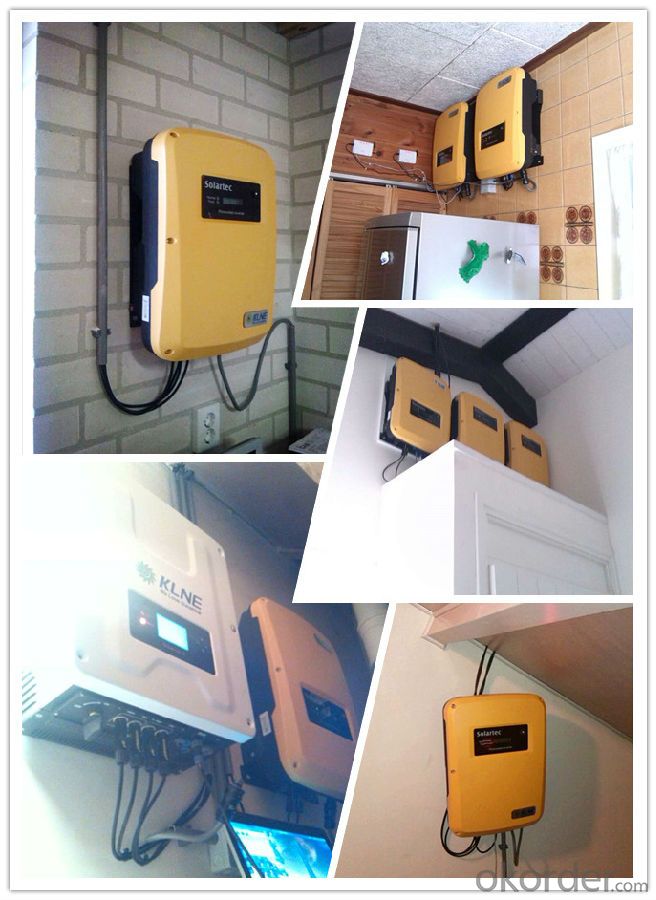
- Q: Can a solar inverter be used with a solar-powered air purification system?
- Yes, a solar inverter can be used with a solar-powered air purification system. A solar inverter converts the direct current (DC) generated by solar panels into usable alternating current (AC) electricity, which can power various appliances or devices, including air purification systems. By connecting a solar inverter to a solar-powered air purification system, it can efficiently operate using renewable energy from the sun.
- Q: Can a solar inverter be used with different brands of solar panels?
- Yes, a solar inverter can generally be used with different brands of solar panels as long as they have compatible specifications and operating voltages. However, it is important to consult the manufacturer's guidelines or seek professional advice to ensure compatibility and optimal performance.
- Q: What is the maximum output power of a solar inverter?
- The maximum output power of a solar inverter depends on its size and specifications. Typical residential solar inverters have a maximum output power ranging from 1 kilowatt (kW) to 10 kW, while commercial and utility-scale inverters can reach several megawatts (MW) of power output.
- Q: What is the importance of voltage and frequency control in a solar inverter?
- The importance of voltage and frequency control in a solar inverter is crucial for maintaining the stability and reliability of the power output. By regulating the voltage and frequency levels, the inverter ensures that the electricity generated from the solar panels is in sync with the grid requirements. This control is necessary to prevent damage to electrical appliances and equipment, maintain grid stability, and enable seamless integration of solar energy into the existing power system.
- Q: Can a solar inverter be used off-grid?
- Yes, a solar inverter can be used off-grid. Off-grid systems typically include a solar panel array, a charge controller, batteries for energy storage, and an inverter to convert the stored DC (direct current) electricity from the batteries into AC (alternating current) electricity for use in off-grid applications. The inverter plays a crucial role in converting the DC power from the solar panels or batteries into usable AC power, making it possible to power various appliances and devices off-grid using solar energy.
- Q: How do you choose the right brand of solar inverter?
- When choosing the right brand of solar inverter, it is important to consider factors such as reliability, efficiency, warranty, and compatibility with your specific solar panel system. Researching customer reviews, comparing specifications and features, and consulting with solar professionals can help in making an informed decision.
- Q: Can a solar inverter be used in a remote location without access to the grid?
- Yes, a solar inverter can be used in a remote location without access to the grid. Solar inverters are designed to convert the direct current (DC) generated by solar panels into alternating current (AC) that can be used to power electrical devices. In off-grid systems, solar inverters are often combined with batteries to store excess energy generated during the day and provide power during the night or when sunlight is limited. This allows for the utilization of solar energy in remote locations where grid access is not available.
- Q: In a photovoltaic grid-connected project, the role of the inverter is to convert the voltage into AC 220V or 380V for the grid, since the transformer will raise the voltage again
- Self-use, do you mean off-grid system? Or else? Europe and Sweden side of the grid project electricity situation is also self-use? If not for their own use or spontaneous use is not used up, sent to other places electricity, you need a transformer?
- Q: How does a solar inverter communicate with other system components?
- A solar inverter communicates with other system components through various methods such as wired connections or wireless technologies like Wi-Fi or Bluetooth. It exchanges information with components like solar panels, batteries, and control systems to monitor and regulate the flow of electricity, optimize energy production, and ensure safe and efficient operation of the solar power system.
- Q: What safety features should a solar inverter have?
- A solar inverter should have several safety features to ensure reliable and secure operation. These features may include overvoltage and undervoltage protection, ground fault protection, temperature monitoring, short circuit protection, and anti-islanding protection. Additionally, it should have built-in surge protection and be compliant with relevant safety standards to safeguard the system and prevent any potential hazards.
Send your message to us
6000W Solartec D 3000 Solar On Grid Inverter with 2 MPPT WiFi
- Loading Port:
- Shanghai
- Payment Terms:
- TT OR LC
- Min Order Qty:
- -
- Supply Capability:
- 10000 set/month
OKorder Service Pledge
Quality Product, Order Online Tracking, Timely Delivery
OKorder Financial Service
Credit Rating, Credit Services, Credit Purchasing
Similar products
Hot products
Hot Searches
Related keywords
